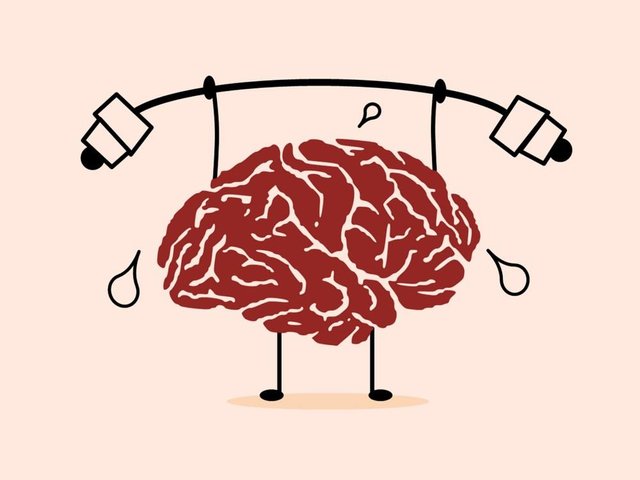Are you plastic, glass or steel? Keys on resistance
Are you plastic, glass or steel? The way we face everyday difficulties determines the material we are made of. Now, the keys to resistance tell us that we always have time to alter those elements that shape us to put on a more optimal material, one halfway between bamboo and graphene.

If there is a decisive aspect when it comes to enjoying an adequate mental and emotional well-being, it is to understand what kind of mechanism we use before the obstacles of life. Thus, two of the most common responses that we usually apply to our day to day are avoidance on the one hand and stillness or "non-resistance" on the other.
Now, far from blaming ourselves for not knowing how to emit another type of alternative when we suffer stress, when we are overwhelmed by third parties or when we see ourselves in a tunnel with no way out, it is time to pay attention to a relevant aspect at this time. The need to flee or stay still are preprogrammed responses in our brain. They are factory-made defense mechanisms that we have not yet updated, they are benignly designed resistances that actually help us to survive, but they rarely contribute directly to our happiness.
In this sense, the keys to resistance are an aspect directly related to our well-being. So that understanding them can help us, a lot.

Brains more and less resistant to emotional stress
Most of us have asked ourselves this question some time: why are there people capable of facing adversity in such a sensational way? We admire his temperance, his optimism and that look capable of seeing possibilities where others see only walls and barbed wire. Have they prepared themselves beforehand? Have they taken courses, perhaps have an innate wisdom or is there something different in their brains?
Well, the key is in this last aspect: in their brains. Thus, and curious as we find there are people with a much more resistant to stress brain, personalities with greater emotional resources to calm anxiety, to avoid irrational mental discourses in extreme situations, etc. The Weill Corner medical school in New York did an interesting job where it was determined, for example, the direct relationship between a parenting based on a healthy attachment and a more skillful response to stress and anxiety.
An inadequate attention, an education inhabited by certain affective deficiencies alters children's brain development. Specifically, the structure that is most affected is the amygdala, a neurological control center as old as it is sophisticated that is in charge of precisely regulating fear and our emotions. In this way, a child who has experienced deficit rearing patterns in some aspect, presents greater difficulties to manage their emotions both in childhood and in maturity.
Are you plastic, glass or steel?
As we pointed out at the beginning, it does not matter what type of mechanism we use in the present to respond to difficulties, stress or adversity. It does not matter if we are the ones who fled or those who, like a mast in the middle of a storm, stay still, until little by little they break and fall. We can all learn new strategies and, if this is the case, it is precisely because of our cerebral plasticity.

Training / stimulating the brain to apply new approaches and renewed strategies makes it a more resistant, more skilled, more sophisticated machine. The goal is to ensure that our brain does not help us only to survive, what we want at the bottom is that it accompanies us, that it secondarily accompanies us, in that attempt to be happier.
Let's see, then, what are the three most common types of stress response and those resistance keys that they usually use.
The response of steel
Stress "bounces" in people of steel. This type of approach far from being healthy has its risks. Being completely impervious to stress will make us unable to learn from it. Moreover, in a way nobody is completely waterproof, nobody is made of steel because our coating is purely emotional.

The key in this sense is to understand that far from being a wall to problems and get them "bounce" in us, we must equip ourselves with skills to manage them better, manage them, filter them, transform them ...
The response of plastic
Within the keys of resistance it is interesting to know that most of us apply this strategy. Its characteristics are the following:
- We have various dents, effects of stress and adversity.
- We are flexible and we also enjoy some resistance, however, many times we have the clear feeling that we are going to break. It's like living on a tightrope.
The response of glass
As we can guess, the response of glass is not the most appropriate. In reality, it is the worst of all, it has the least resources, the one that, after making a great effort so that it yields, so that it adapts, ends up breaking. So, either it is imposed or it is totally destroyed.
Keys to healthier endurance
The keys to healthier resistance tell us the following: we must find an intermediate point between strength and flexibility, a space of maturity where we can manage, prioritize and transform. That is, if we leave for example to act our innate psychological defenses we will be opting for the line of least resistance: the glass.
On the other hand, if we choose the line of greatest resistance we will use all our energy to oppose something, to raise a wall where we protect ourselves from life. This is undoubtedly the strategy of steel.
So, if none of these two answers are the most accurate, which one should we apply? The key to the healthiest resistance is to empower our self-confidence to know we are worthy of something better. Therefore, we will not let anything overwhelm us until we break or rise like a steel mast waiting for the impact of any storm.
Let's build a material halfway between a more resistant plastic and bamboo. A flexible but strong material, that allows us to move with the difficulties to learn from them, that even if it is doubled, it returns to its original position having assumed a teaching to advance with greater aplomb.
Let's start working on this vital strategy today


You got a 35.21% upvote from @nado.bot courtesy of @joelgonz1982!
Send at least 0.1 SBD to participate in bid and get upvote of 0%-100% with full voting power.